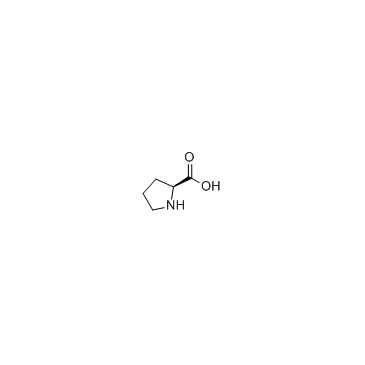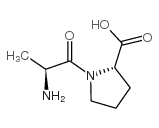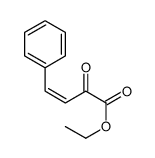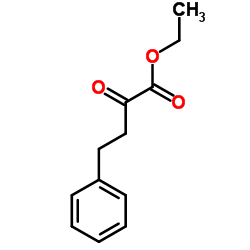Enalapril

Enalapril structure
|
Common Name | Enalapril | ||
|---|---|---|---|---|
| CAS Number | 75847-73-3 | Molecular Weight | 376.447 | |
| Density | 1.2±0.1 g/cm3 | Boiling Point | 582.3±50.0 °C at 760 mmHg | |
| Molecular Formula | C20H28N2O5 | Melting Point | 143-144.5ºC | |
| MSDS | USA | Flash Point | 306.0±30.1 °C | |
| Symbol |


GHS07, GHS08 |
Signal Word | Warning | |
Use of EnalaprilEnalapril is an angiotensin converting enzyme (ACE) inhibitorTarget: ACEEnalapril belongs to a class of medications called angiotensin converting enzyme inhibitors. Normally angiotensin I is converted to angiotensin II by angiotensin converting enzyme (ACE). Angiotensin II constricts blood vessels, increasing blood pressure. By inhibiting ACE, Enalapril decreases levels of angiotensin II leading to less vasoconstriction and decreased blood pressure. |
| Name | enalapril |
|---|---|
| Synonym | More Synonyms |
| Description | Enalapril is an angiotensin converting enzyme (ACE) inhibitorTarget: ACEEnalapril belongs to a class of medications called angiotensin converting enzyme inhibitors. Normally angiotensin I is converted to angiotensin II by angiotensin converting enzyme (ACE). Angiotensin II constricts blood vessels, increasing blood pressure. By inhibiting ACE, Enalapril decreases levels of angiotensin II leading to less vasoconstriction and decreased blood pressure. |
|---|---|
| Related Catalog | |
| References |
| Density | 1.2±0.1 g/cm3 |
|---|---|
| Boiling Point | 582.3±50.0 °C at 760 mmHg |
| Melting Point | 143-144.5ºC |
| Molecular Formula | C20H28N2O5 |
| Molecular Weight | 376.447 |
| Flash Point | 306.0±30.1 °C |
| Exact Mass | 376.199829 |
| PSA | 170.54000 |
| LogP | 2.43 |
| Vapour Pressure | 0.0±1.7 mmHg at 25°C |
| Index of Refraction | 1.550 |
|
Section1. IDENTIFICATION OF THE SUBSTANCE/MIXTURE Product identifiers Product name: Enalapril : CDS020548 CAS-No.: 75847-73-3 Section2. HAZARDS IDENTIFICATION Classification of the substance or mixture Classification according to Regulation (EC) No 1272/2008 [EU-GHS/CLP] Skin sensitization (Category 1) Reproductive toxicity (Category 2) Classification according to EU Directives 67/548/EEC or 1999/45/EC May cause sensitization by skin contact. Possible risk of impaired fertility. Possible risk of harm to the unborn child. Label elements Labelling according Regulation (EC) No 1272/2008 [CLP] Pictogram Signal wordWarning Hazard statement(s) May cause an allergic skin reaction. Suspected of damaging fertility or the unborn child. Precautionary statement(s) Wear protective gloves. Supplemental Hazardnone Statements According to European Directive 67/548/EEC as amended. Hazard symbol(s) R-phrase(s) R43May cause sensitization by skin contact. R62Possible risk of impaired fertility. R63Possible risk of harm to the unborn child. S-phrase(s) S22Do not breathe dust. S26In case of contact with eyes, rinse immediately with plenty of water and seek medical advice. S36Wear suitable protective clothing. Other hazards - none Section3. COMPOSITION/INFORMATION ON INGREDIENTS Substances : (S)-(−)-1-[N-(1-Ethoxycarbonyl-3-phenylpropyl)-L-alanyl]-Lproline Synonyms Formula: C20H28N2O5 Molecular Weight: 376,45 g/mol ComponentConcentration (S)-(−)-1-[N-(1-Ethoxycarbonyl-3-phenylpropyl)-L-alanyl]-Lproline CAS-No.75847-73-3- Section4. FIRST AID MEASURES Description of first aid measures General advice Consult a physician. Show this safety data sheet to the doctor in attendance. If inhaled If breathed in, move person into fresh air. If not breathing, give artificial respiration. Consult a physician. In case of skin contact Wash off with soap and plenty of water. Consult a physician. In case of eye contact Flush eyes with water as a precaution. If swallowed Never give anything by mouth to an unconscious person. Rinse mouth with water. Consult a physician. Most important symptoms and effects, both acute and delayed hematopoiesis, renal damage, varation of retinal blood vessels, pruritus, taste disturbance, Exerts a potent hypotensive action Indication of any immediate medical attention and special treatment needed no data available Section5. FIREFIGHTING MEASURES Extinguishing media Suitable extinguishing media Use water spray, alcohol-resistant foam, dry chemical or carbon dioxide. Special hazards arising from the substance or mixture Carbon oxides, nitrogen oxides (NOx) Advice for firefighters Wear self contained breathing apparatus for fire fighting if necessary. Further information no data available Section6. ACCIDENTAL RELEASE MEASURES Personal precautions, protective equipment and emergency procedures Use personal protective equipment. Avoid dust formation. Avoid breathing vapors, mist or gas. Ensure adequate ventilation. Evacuate personnel to safe areas. Avoid breathing dust. Environmental precautions Prevent further leakage or spillage if safe to do so. Do not let product enter drains. Methods and materials for containment and cleaning up Pick up and arrange disposal without creating dust. Sweep up and shovel. Keep in suitable, closed containers for disposal. Reference to other sections For disposal see section 13. Section7. HANDLING AND STORAGE Precautions for safe handling Avoid contact with skin and eyes. Avoid formation of dust and aerosols. Provide appropriate exhaust ventilation at places where dust is formed. Conditions for safe storage, including any incompatibilities Store in cool place. Keep container tightly closed in a dry and well-ventilated place. Specific end use(s) no data available Section8. EXPOSURE CONTROLS/PERSONAL PROTECTION Control parameters Components with workplace control parameters Exposure controls Appropriate engineering controls Handle in accordance with good industrial hygiene and safety practice. Wash hands before breaks and at the end of workday. Personal protective equipment Eye/face protection Face shield and safety glasses Use equipment for eye protection tested and approved under appropriate government standards such as NIOSH (US) or EN 166(EU). Skin protection Handle with gloves. Gloves must be inspected prior to use. Use proper glove removal technique (without touching glove's outer surface) to avoid skin contact with this product. Dispose of contaminated gloves after use in accordance with applicable laws and good laboratory practices. Wash and dry hands. The selected protective gloves have to satisfy the specifications of EU Directive 89/686/EEC and the standard EN 374 derived from it. Body Protection Complete suit protecting against chemicals, The type of protective equipment must be selected according to the concentration and amount of the dangerous substance at the specific workplace. Respiratory protection Where risk assessment shows air-purifying respirators are appropriate use a full-face particle respirator type N100 (US) or type P3 (EN 143) respirator cartridges as a backup to engineering controls. If the respirator is the sole means of protection, use a full-face supplied air respirator. Use respirators and components tested and approved under appropriate government standards such as NIOSH (US) or CEN (EU). Section9. PHYSICAL AND CHEMICAL PROPERTIES Information on basic physical and chemical properties a) AppearanceForm: solid b) Odourno data available c) Odour Thresholdno data available d) pHno data available e) Melting point/freezingno data available point f) Initial boiling point and no data available boiling range g) Flash pointnot applicable h) Evaporation rateno data available i) Flammability (solid, gas) no data available j) Upper/lowerno data available flammability or explosive limits k) Vapour pressureno data available l) Vapour densityno data available m) Relative densityno data available n) Water solubilityno data available o) Partition coefficient: n- no data available octanol/water p) Auto-ignitionno data available temperature q) Decompositionno data available temperature r) Viscosityno data available s) Explosive propertiesno data available t) Oxidizing propertiesno data available Other safety information no data available Section10. STABILITY AND REACTIVITY Reactivity no data available Chemical stability no data available Possibility of hazardous reactions no data available Conditions to avoid no data available Incompatible materials Strong oxidizing agents Hazardous decomposition products Other decomposition products - no data available Section11. TOXICOLOGICAL INFORMATION Information on toxicological effects Acute toxicity LD50 Oral - rat - 2.973 mg/kg LD50 Oral - mouse - 3.507 mg/kg LD50 Subcutaneous - rat - 1.418 mg/kg LD50 Intravenous - rat - 849 mg/kg LD50 Intravenous - mouse - 859 mg/kg LD50 Subcutaneous - mouse - 1.160 mg/kg Skin corrosion/irritation no data available Serious eye damage/eye irritation no data available Respiratory or skin sensitization May cause sensitization by skin contact. Germ cell mutagenicity no data available Carcinogenicity IARC:No component of this product present at levels greater than or equal to 0.1% is identified as probable, possible or confirmed human carcinogen by IARC. Reproductive toxicity Suspected human reproductive toxicant Specific target organ toxicity - single exposure no data available Specific target organ toxicity - repeated exposure no data available Aspiration hazard no data available Potential health effects InhalationMay be harmful if inhaled. May cause respiratory tract irritation. IngestionMay be harmful if swallowed. SkinMay be harmful if absorbed through skin. May cause skin irritation. EyesMay cause eye irritation. Signs and Symptoms of Exposure hematopoiesis, renal damage, varation of retinal blood vessels, pruritus, taste disturbance, Exerts a potent hypotensive action Additional Information RTECS: TW3665500 Section12. ECOLOGICAL INFORMATION Toxicity no data available Persistence and degradability no data available Bioaccumulative potential no data available Mobility in soil no data available Results of PBT and vPvB assessment no data available Other adverse effects no data available Section13. DISPOSAL CONSIDERATIONS Waste treatment methods Product Offer surplus and non-recyclable solutions to a licensed disposal company. Dissolve or mix the material with a combustible solvent and burn in a chemical incinerator equipped with an afterburner and scrubber. Contaminated packaging Dispose of as unused product. Section14. TRANSPORT INFORMATION UN number ADR/RID: -IMDG: -IATA: - UN proper shipping name ADR/RID: Not dangerous goods IMDG: Not dangerous goods IATA:Not dangerous goods Transport hazard class(es) ADR/RID: -IMDG: -IATA: - Packaging group ADR/RID: -IMDG: -IATA: - Environmental hazards ADR/RID: noIMDG Marine Pollutant: noIATA: no Special precautions for user no data available Section15. REGULATORY INFORMATION This safety datasheet complies with the requirements of Regulation (EC) No. 1907/2006. Safety, health and environmental regulations/legislation specific for the substance or mixture no data available Chemical Safety Assessment SECTION 16 - ADDITIONAL INFORMATION N/A |
| Symbol |


GHS07, GHS08 |
|---|---|
| Signal Word | Warning |
| Hazard Statements | H317-H361 |
| Precautionary Statements | P280 |
| Hazard Codes | Xi |
| Safety Phrases | S22-S24/25 |
| RIDADR | NONH for all modes of transport |
| RTECS | TW3665500 |
| Precursor 8 | |
|---|---|
| DownStream 3 | |
|
Evaluation of a rapid method for the therapeutic drug monitoring of aliskiren, enalapril and its active metabolite in plasma and urine by UHPLC-MS/MS.
J. Chromatogr. B. Analyt. Technol. Biomed. Life Sci. 980 , 79-87, (2015) Given the increasing popularity of aliskiren, particularly in combination with angiotensin converting enzyme inhibitor (e.g. enalapril), it is important to determine whether its use in combination wit... |
|
|
Mineralocorticoid receptor blockade improves coronary microvascular function in individuals with type 2 diabetes.
Diabetes 64(1) , 236-42, (2015) Reduced coronary flow reserve (CFR), an indicator of coronary microvascular dysfunction, is seen in type 2 diabetes mellitus (T2DM) and predicts cardiac mortality. Since aldosterone plays a key role i... |
|
|
Critical blood pressure threshold dependence of hypertensive injury and repair in a malignant nephrosclerosis model.
Hypertension 64(4) , 801-7, (2014) Most patients with essential hypertension do not exhibit substantial renal damage. Renal autoregulation by preventing glomerular transmission of systemic pressures has been postulated to mediate this ... |
| Enacard |
| [3H]-Eletriptan |
| N-[(S)-1-(ethoxycarbonyl)-3-phenylpropyl]-L-alanyl-L-proline |
| Eletriptan [INN:BAN] |
| Acesistem |
| Eletriptan |
| Lotrial |
| EINECS 278-375-7 |
| Naprilene |
| (R)-5-(2-phenylsulphonylethyl)-3-(N-methylpyrrolidin-2-ylmethyl)-1H-indole |
| L-Proline, N-((1S)-1-(ethoxycarbonyl)-3-phenylpropyl)-L-alanyl- |
| Enalapril |
| 1-[N-[(S)-1-Carboxy-3-phenylpropyl]-1-alanyl]-L-proline 1'-Ethyl Ester |
| enalaprila |
| MFCD00865774 |
| N-{(1S)-1-[(ethyloxy)carbonyl]-3-phenylpropyl}-L-alanyl-L-proline |
| Reniten |
| N-[(2S)-1-Ethoxy-1-oxo-4-phenyl-2-butanyl]alanyl-L-proline |
| Eletriptan (INN) |
| Enap |
| Renitec |
| N-[1-(S)-(ethoxycarbonyl)-3-phenylpropyl]alanylproline |
| 3-(N-methyl-2(R)-pyrrolidinylmethyl)-5-(2-phenylsulphonylethyl)-1H-indole |
| Hipoartel |
| Amprace |
| Relpax |
| olivin |
| Xanef |
| N-[(2S)-1-Ethoxy-1-oxo-4-phenylbutan-2-yl]-L-alanyl-L-proline |
| eletriptanum |
| L-Proline, N-[(1S)-1-(ethoxycarbonyl)-3-phenylpropyl]alanyl- |
| Enapren |
| N-[(1S)-1-(ethoxycarbonyl)-3-phenylpropyl]-L-alanyl-L-proline |
| Enaloc |
| Renivace |
| Glioten |
| L-Proline, N-[(1S)-1-(ethoxycarbonyl)-3-phenylpropyl]-L-alanyl- |
| N-[(2S)-1-Ethoxy-1-oxo-4-phenyl-2-butanyl]-L-alanyl-L-proline |
| Pres |
| Innovace |
| (R)-3-((1-methylpyrrolidin-2-yl)methyl)-5-(2-(phenylsulfonyl)ethyl)-1H-indole |
![N-[(S)-1-Ethoxycarbonyl-3-phenylpropyl]-L-alanine Structure](https://image.chemsrc.com/caspic/376/82717-96-2.png) CAS#:82717-96-2
CAS#:82717-96-2 CAS#:147-85-3
CAS#:147-85-3 CAS#:13485-59-1
CAS#:13485-59-1 CAS#:17451-20-6
CAS#:17451-20-6![N-[(1S)-1-(Ethoxycarbonyl)-3-phenylpropyl]-L-alanyl-L-proline Benzylester Structure](https://image.chemsrc.com/caspic/052/120924-94-9.png) CAS#:120924-94-9
CAS#:120924-94-9 CAS#:64920-29-2
CAS#:64920-29-2 CAS#:108428-39-3
CAS#:108428-39-3![N-[1-(S)-ethoxycarbonyl-3-phenylpropyl]-L-alanine acid chloride Structure](https://image.chemsrc.com/caspic/109/103377-40-8.png) CAS#:103377-40-8
CAS#:103377-40-8 CAS#:76095-16-4
CAS#:76095-16-4 CAS#:76420-72-9
CAS#:76420-72-9![ethyl (2S)-2-[(3S,8aS)-3-methyl-1,4-dioxo-6,7,8,8a-tetrahydro-3H-pyrrolo[1,2-a]pyrazin-2-yl]-4-phenylbutanoate structure](https://image.chemsrc.com/caspic/127/115729-52-7.png) CAS#:115729-52-7
CAS#:115729-52-7
